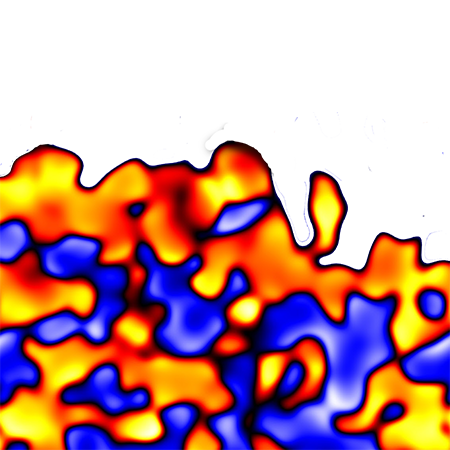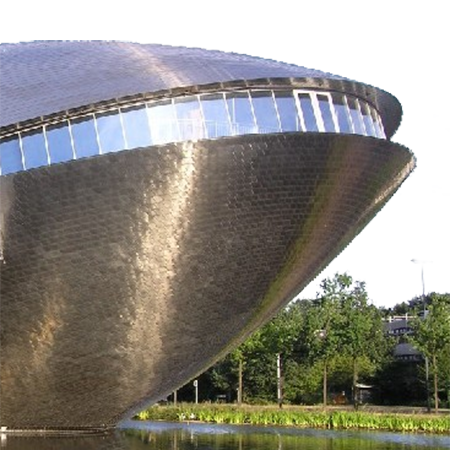Patterns of Life
Life is full of pattterns: From the stripes of the zebra to the spots of the leopard. The aim of the Patterns Of Life project is to visualize the beauty and complexity of the self-organization process in which these patterns are formed. While you watch, the patterns of life installation produces scientific data that is used to explore pattern formation.
Visualizing the complexity of life is a major challenge in art. Patterns Of Life tackles this challenge by visualizing the beauty and complexity of patter formation. The diversity of patters generated by the exhibit is surprising, the constanly evolving and shifting shapes hint at intricate design, but are the result of a simple equation, visualized artistically. Because, the exhibit constitutes the first exploration of this particular type of equation every sequence shown is novel and unanticipated. Yet every image shown is also analyzed scientifically and adds a further insight to a growing body of knowledge. The installation thus not only symbolizes but contributes to the constant progress in the scientific exploration of complexity.
A detailed description of the background and results from the patterns of life project can be found in the following paper:
- M. Baurmann, T. Gross, and U. Feudel: Journal of Theoretical Biology 245(2), 220-229, 2007. (link)
The installation visualizes an ecologically-motivated reaction diffusion system in two spatial dimensions. This specific system is known as a Rosenzweig-MacArthur-model with quadratic mortality, and had not previously been explored in detail. We showed that this system contains a condimension-3 Turing-Takens-Bogdanov bifurcation - A major organizing center for pattern formation. The installation visualizes dynamics close to this organizing center.
The project was sponsored by the EWE Foundation, Oldenburg, and exhibited at the Universum Science Center, Bremen.


